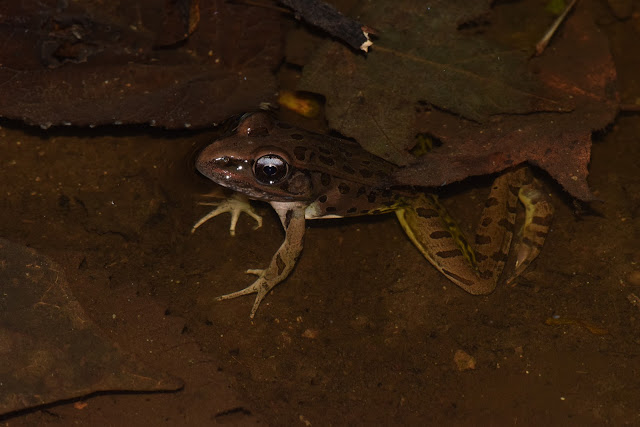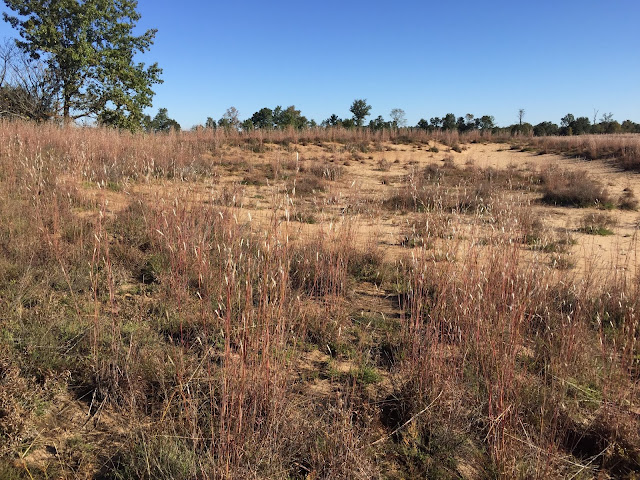
We drove throughout the night to get to southern Illinois from Ontario and didn't even try to get any sleep before heading out for a walk down the road. With the rain that had hit overnight and the continued spitting throughout the day we had a great day for amphibians. Our first sightings were Green Tree Frogs (Hyla cinerea).
 |
| Green Tree Frog (Hyla cinerea) |
 |
| Northern Slimy Salamanders (Plethodon glutinosus) |
 |
| Zigzag Salamander (Plethodon dorsalis) |
 |
| Eastern Newts (Notophthalmus viridescens) |
 |
| Eastern Newts (Notophthalmus viridescens) |
 |
| Eastern Copperhead (Agkistrodon contortrix) |
 |
| Eastern Copperhead (Agkistrodon contortrix) |
 |
| Eastern Copperhead (Agkistrodon contortrix) |
 |
| Eastern Copperhead (Agkistrodon contortrix) |
 |
| Ringneck Snake (Diadophis punctatus) |
 |
| Ringneck Snake (Diadophis punctatus) |
 |
| Ringneck Snake (Diadophis punctatus) |
 |
| Northern Cottonmouth (Agkistrodon piscivorus) |
 |
| Northern Cottonmouth (Agkistrodon piscivorus) |
 |
| Northern Cottonmouth (Agkistrodon piscivorus) |
 |
| Northern Cottonmouth (Agkistrodon piscivorus) |
Other cracks had lonely little toads peeking out of them.
On almost every single one of these trips I manage to see a Timber Rattlesnake, BUT they are always deep in the cracks and I have NEVER seen their face or gotten a decent photo of one. This year changed that. It was still in a crack but at least not very deep and it was definitely looking straight out at me as I took a picture.
 |
| Timber Rattlesnake (Crotalus horridus) |
We also got to see a few Western Ribbonsnakes along the road over the course of the weekend.
 |
| Western Ribbonsnake (Thamnophis proximus) |
We went out looking for more thing after dark and found Long-tailed Salamanders (Eurycea longicauda) and Cave Salamander (Eurycea lucifuga).
 |
| Cave Salamander (Eurycea lucifuga) |
 |
| Southern Leopard Frog (Lithobates sphenocephalus) |
 |
| Green Tree Frog (Hyla cinerea) |
 |
| Rough Greensnake (Opheodrys aestivus) |
The Mississippi River is a natural barrier to species movement and a lot of different species occur across the border in Missouri. We took a morning to go exploring in a different area that I had never been to before and it was amazing!
The holy grail we were looking for in this unique place was a Plains Hognose (Heterodon nasicus gloydi) and we managed to spot one curled up basking just at the edge of a clump of grass. They blend in so well it would be easy to miss. We also saw Six-lined Racerunners but they were far to fast for me to get a photograph of!
 |
| Plains Hognose (Heterodon nasicus gloydi) |
 |
| Marbled Salamander (Ambystoma opacum) |
 |
| Marbled Salamander (Ambystoma opacum) |
 |
| Marbled Salamander (Ambystoma opacum) |
 |
| Mole Salamander (Ambystoma talpoideum) |
 |
| Mole Salamander (Ambystoma talpoideum) |
 |
| Small-mouthed Salamander (Ambystoma texanum) |


While we were in the swamp we saw a Cottonmouth swimming in the water. It left a trail right through the duckweed so you could tell exactly where it came from. There were a lot of basking sliders along the river but it was a fairly warm day and they spooked before we could get anywhere close to them.
As we walked around we found a few cool things including:
Common Box Turtle (Terrapene carolina)
Crane-fly Orchid (Tipularia discolor)
Northern Cottonmouth (Agkistrodon piscivorus)
Plain-bellied Watersnake (Nerodia erythrogaster)
 |
| Plain-bellied Watersnake (Nerodia erythrogaster) |













